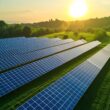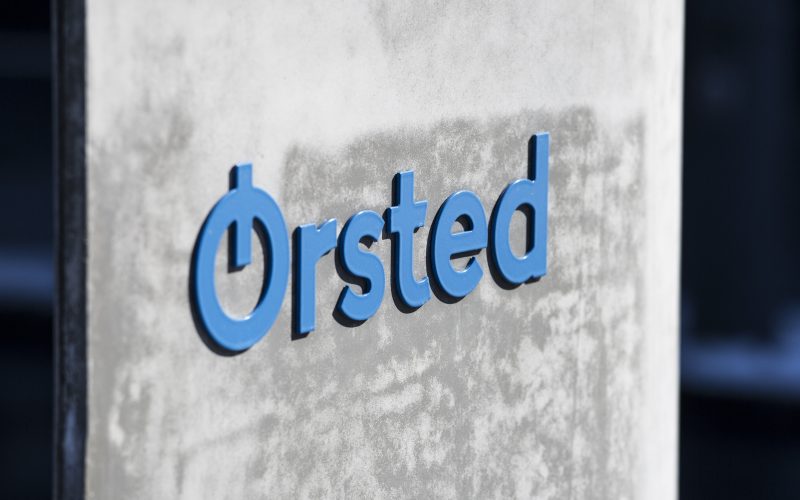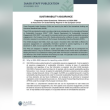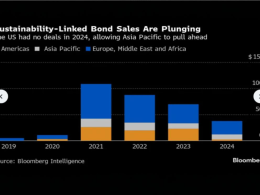Ørsted will sell a 50% equity stake in its 2.9GW Hornsea 3 offshore wind farm in the UK to funds managed by Apollo, in a transaction that strengthens the Danish developer’s balance sheet while bringing in a long-term infrastructure investor to support one of the world’s largest renewable energy projects.
The deal, valued at about DKK 39 billion (around US$6.5 billion), covers both the acquisition of a 50% interest in the joint venture that will own Hornsea 3 and Apollo’s commitment to fund 50% of the project’s remaining construction costs, including the offshore transmission asset. The total project investment remains in the range of DKK 70–75 billion. About DKK 20 billion will be paid at closing — split between an estimated DKK 10 billion share purchase price and DKK 10 billion as an initial construction payment — with the balance to be provided as key construction milestones are achieved.
The transaction is subject to customary regulatory approvals and is expected to close before the end of 2025. Apollo-managed entities are expected to invest roughly US$3.25 billion at closing, with the remaining US$3.25 billion to be deployed over the construction phase.
Capital plan milestone for Ørsted
Ørsted said the partnership marks a key step in its funding and divestment plan, aimed at reinforcing its capital structure and progressing its partnership model for large offshore assets. The company will continue to construct Hornsea 3 under a full-scope EPC contract and will provide long-term operations and maintenance (O&M) from its East Coast hub, as well as balancing services and a long-term route to market for the power generated.
Trond Westlie, Chief Financial Officer at Ørsted, said: “We’re pleased to welcome Apollo as a partner for Hornsea 3, as they bring infrastructure expertise and scaled capital. We look forward to working with them to deliver this important project that will produce enough electricity to power more than 3 million UK homes once completed and contribute to the renewable transformation of the UK. The divestment represents an important milestone for Ørsted as we continue to deliver on our partnership and divestment programme, which is a cornerstone of our business plan.”
Ørsted added that the upfront, non-cash EBITDA effect is in line with the expectations set out in the prospectus for its recent rights issue, and the expected aggregate lifetime EBITDA impact remains neutral. The group confirmed the transaction does not change its 2025 EBITDA guidance or the year’s expected gross investment level.
Apollo backs UK energy transition and security
For Apollo, the investment extends a strategy of deploying large-scale, flexible capital into European energy and infrastructure assets, following recent commitments to Germany’s power grid expansion, the UK’s Hinkley Point C nuclear project and multiple energy-transition deals.
Adam Petrie, Apollo Infrastructure Partner, said: “Ørsted is a global leader in offshore wind power and Hornsea 3 is its most significant project yet, with capacity to bring reliable, renewable energy to millions of homes across the UK. Through this investment, we are proud to deliver a scaled and comprehensive solution for infrastructure that will promote energy security and the UK’s net-zero ambitions.”
Leslie Mapondera, Apollo Partner and Co-Head of European Credit, added that the firm aims to be “a scaled provider of long-term and flexible capital solutions for leading companies and infrastructure,” noting that the Hornsea 3 deal fits Apollo’s focus on energy infrastructure, transition assets, AI-enabling infrastructure and other European priorities.
Senior financing for the transaction is being led by Apollo-managed entities, with bank facilities underwritten by BNP Paribas, ING Bank, Lloyds and RBC Capital Markets. Co-investors include La Caisse (formerly CDPQ), committed across equity and debt, and PSP Investments on the debt side. Linklaters LLP is advising the Apollo funds, while RBC Capital Markets is financial adviser; Paul, Weiss, Rifkind, Wharton & Garrison LLP is acting as lenders’ counsel.
World’s largest operating offshore wind zone
Hornsea 3, located around 160 km off the Yorkshire coast, will have 2.9GW of capacity — enough to power more than 3 million UK homes with low-cost renewable electricity. Construction is said to be progressing to schedule across onshore, offshore and component-fabrication activities.
Once Hornsea 3 is operational, Ørsted’s broader Hornsea zone — comprising Hornsea 1, 2 and 3 — will exceed 5GW, making it the world’s largest operating offshore wind zone and a major contributor to the UK’s decarbonisation and energy-security goals.





















